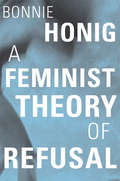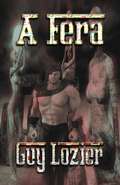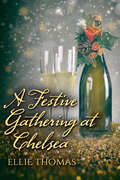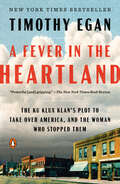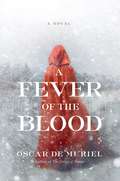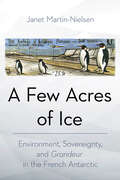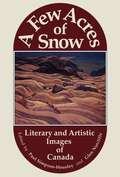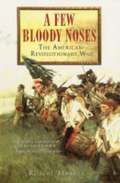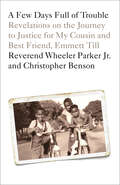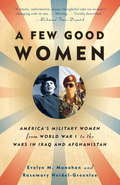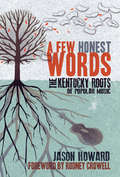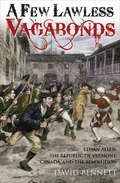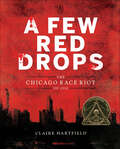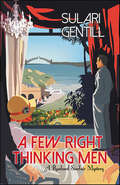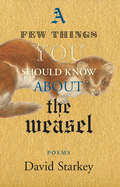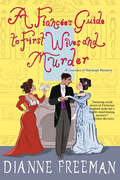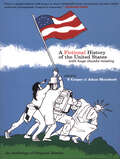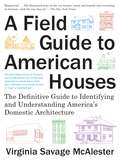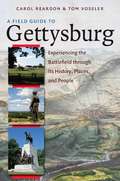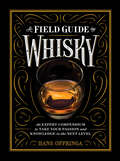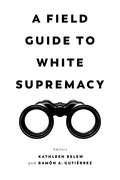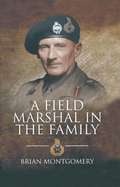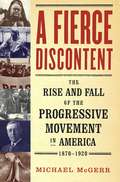- Table View
- List View
A Feminist Theory of Refusal
by Bonnie HonigAn acclaimed political theorist offers a fresh, interdisciplinary analysis of the politics of refusal, highlighting the promise of a feminist politics that does not simply withdraw from the status quo but also transforms it. The Bacchae, Euripides’s fifth-century tragedy, famously depicts the wine god Dionysus and the women who follow him as indolent, drunken, mad. But Bonnie Honig sees the women differently. They reject work, not out of laziness, but because they have had enough of women’s routine obedience. Later they escape prison, leave the city of Thebes, explore alternative lifestyles, kill the king, and then return to claim the city. Their “arc of refusal,” Honig argues, can inspire a new feminist politics of refusal. Refusal, the withdrawal from unjust political and economic systems, is a key theme in political philosophy. Its best-known literary avatar is Herman Melville’s Bartleby, whose response to every request is, “I prefer not to.” A feminist politics of refusal, by contrast, cannot simply decline to participate in the machinations of power. Honig argues that a feminist refusal aims at transformation and, ultimately, self-governance. Withdrawal is a first step, not the end game. Rethinking the concepts of refusal in the work of Giorgio Agamben, Adriana Cavarero, and Saidiya Hartman, Honig places collective efforts toward self-governance at refusal’s core and, in doing so, invigorates discourse on civil and uncivil disobedience. She seeks new protagonists in film, art, and in historical and fictional figures including Sophocles’s Antigone, Ovid’s Procne, Charlie Chaplin’s Tramp, Leonardo da Vinci’s Madonna, and Muhammad Ali. Rather than decline the corruptions of politics, these agents of refusal join the women of Thebes first in saying no and then in risking to undertake transformative action.
A Fera
by Guy LozierA Fera por Guy Lozier William, um amigo muito próximo do general George Custer, afirma que ele foi ameaçado de morte ou vida na prisão se falou sobre o que testemunhou em Little Bighorn ... A fera A família Nugent procura o autor Guy Lozier, pedindo que ele publique o manuscrito de William D. Nugent. William, um amigo muito próximo do general George Custer, afirma que ele foi ameaçado de morte ou vida na prisão se falou sobre o que testemunhou em Little Bighorn. Depois de quarenta anos, William decidiu que era hora de alguém se levantar e corrigir as mentiras sobre seu bom amigo Custer. Indo para Guy Lozier, Tim Biswell pediu a Guy para ajudar a publicar o manuscrito. Guy investiga a história e concorda. Quando Guy inicia sua investigação sobre os eventos nos dias de Custer, que antecederam Little Bighorn, ele encontra uma história ainda maior que o governo deseja encobrir. Outro grupo escondido nas entranhas dos campos de inteligência ABC do governo e organizações secretas, fica sabendo das atividades de Guy. Enquanto eles ficam de olho em Guy, outro homem misterioso sai das sombras para tentar ajudá-lo, trazendo-lhe documentos antigos do século XIX. Este homem misterioso é assassinado no aeroporto tentando se encontrar com Guy. Os capangas do governo interceptam Guy enquanto outros assassinam seu alvo. Apenas um compartimento secreto com documentos é revelado no homem misterioso assassinado, dando a Guy pistas dos mistérios antigos que organizações secretas têm procurado durante todo esse tempo.
A Festive Gathering at Chelsea
by Ellie ThomasSequel to May WeddingIn early December of 1817, shortly before the ton retires to the countryside for the winter, Percy Havilland decides to hold an informal Yuletide afternoon party for his companions and family.Within the unconventional social array of guests are Percy’s closest friends, the four couples consisting of gentlemen and working men who meet for supper each Thursday evening at The Golden Lion tavern.Percy’s aims are supported by his long-suffering and ever-reliable lover, Nathan. Meanwhile, gentleman Jo Everett relishes that he can proudly attend a social occasion with his life partner, the tailor Daniel Walters. And musician Luc has a private plan for Christmas to reveal to his actor sweetheart, Harry.But amongst these happy couples, all is not well between Captain Ben Harding and Edward Stephens. Can Ben’s best friend Jo intervene on Edward’s behalf? Or might Ben have already reached a decision, leaving Edward heartbroken?
A Fever in the Heartland: The Ku Klux Klan's Plot to Take Over America, and the Woman Who Stopped Them
by Timothy EganNEW YORK TIMES BESTSELLER • A Washington Post Notable Work of Nonfiction • An NPR Best Book of the Year • A Kirkus Reviews Best Book of the Year • A Chicago Review of Books Best Book of the Year • A New York Public Library Best Book of the Year • A Goodreads Choice Awards Finalist"With narrative elan, Egan gives us a riveting saga of how a predatory con man became one of the most powerful people in 1920s America, Grand Dragon of the Ku Klux Klan, with a plan to rule the country—and how a grisly murder of a woman brought him down. Compelling and chillingly resonant with our own time." —Erik Larson, author of The Splendid and the Vile&“Riveting…Egan is a brilliant researcher and lucid writer.&” —Minneapolis Star TribuneA historical thriller by the Pulitzer and National Book Award-winning author that tells the riveting story of the Klan's rise to power in the 1920s, the cunning con man who drove that rise, and the woman who stopped them.The Roaring Twenties--the Jazz Age--has been characterized as a time of Gatsby frivolity. But it was also the height of the uniquely American hate group, the Ku Klux Klan. Their domain was not the old Confederacy, but the Heartland and the West. They hated Blacks, Jews, Catholics and immigrants in equal measure, and took radical steps to keep these people from the American promise. And the man who set in motion their takeover of great swaths of America was a charismatic charlatan named D.C. Stephenson.Stephenson was a magnetic presence whose life story changed with every telling. Within two years of his arrival in Indiana, he&’d become the Grand Dragon of the state and the architect of the strategy that brought the group out of the shadows – their message endorsed from the pulpits of local churches, spread at family picnics and town celebrations. Judges, prosecutors, ministers, governors and senators across the country all proudly proclaimed their membership. But at the peak of his influence, it was a seemingly powerless woman – Madge Oberholtzer – who would reveal his secret cruelties, and whose deathbed testimony finally brought the Klan to their knees.A FEVER IN THE HEARTLAND marries a propulsive drama to a powerful and page-turning reckoning with one of the darkest threads in American history.
A Fever of the Blood: A Novel (A\victorian Mystery Ser. #2)
by Oscar De MurielThis riveting new detective novel evokes a spellbinding concoction of crime, history, and horror—perfect for fans of Arthur Conan Doyle and P.D. James. New Year's Day, 1889. In Edinburgh's lunatic asylum, a patient escapes as a nurse lays dying. Leading the manhunt are legendary local Detective 'Nine-Nails' McGray and Londoner-in-exile Inspector Ian Frey. Before the murder, the suspect was heard in whispered conversation with a fellow patient—a girl who had been mute for years. What made her suddenly break her silence? And why won't she talk again? Could the rumours about black magic be more than superstition? McGray and Frey track a devious psychopath far beyond their jurisdiction, through the worst blizzard in living memory, into the shadow of Pendle Hill—home of the Lancashire witches—where unimaginable danger awaits.
A Few Acres of Ice: Environment, Sovereignty, and "Grandeur" in the French Antarctic
by Janet Martin-NielsenA Few Acres of Ice is an in-depth study of France's complex relationship with the Antarctic, from the search for Terra Australis by French navigators in the sixteenth century to France's role today as one of seven states laying claim to part of the white continent. Janet Martin-Nielsen focuses on environment, sovereignty, and science to reveal not only the political, commercial, and religious challenges of exploration but also the interaction between environmental concerns in polar regions and the geopolitical realities of the twenty-first century.Martin-Nielsen details how France has worked (and at times not worked) to perform sovereignty in Terre Adélie, from the territory's integration into France's colonial empire to France's integral role in making the environment matter in Antarctic politics. As a result, A Few Acres of Ice sheds light on how Terre Adeìlie has altered human perceptions and been constructed by human agency since (and even before) its discovery.
A Few Acres of Snow: Literary and Artistic Images of Canada
by Paul Simpson-Housley Glen NorcliffeIn 1759, Voltaire in Candide referred to Canada as "quelques arpents de neige." For several centuries, the image prevailed and was the one most frequently used by poets, writers, and illustrators. Canada was perceived and portrayed as a cold, hard, and unforgiving land. this was not a land for the fainthearted. Canada has yieled its wealth only reluctantly, while periodically threatening life itself with its displays of fury. Discovering its beauty and hidden resources requires patience and perseverance. A Few Acres of Snow is a colletion of twenty-two essays that explore, from the geographer’s perspective, how poets, artists, and writers have addressed the physical essence of Canada, both landscape and cityscape. "Sense of place" is clearly critical in the works examined in this volume. Included among the book’s many subjects are Hugh MacLennan, Gabrielle Roy, Lucius O’Brien, the art of the Inuit, Lawren Harris, Malcolm Lowry, C.W. Jefferys, L.M. Montgomery, Elizabeth Bishop, Marmaduke Matthews, Antonine Mailet, and the poetry of Japanese Canadians.
A Few Bloody Noses
by Robert HarveyLiberty against oppression, right against wrong - a clear message has come down to us about the origins of the American War of Independence, one of the founding events of the modern world. As with so many legends, the truth is somewhat different. In this revealing account, Robert Harvey overturns most of our assumptions about the causes of the war. Both Britain and America were divided over the struggle, America violently so, while in Britain many favoured independence if it would avoid bloodshed. The war itself was vicious and confused, and marked by incompetence and bad faith on both sides. When it was over the Americans pushed out their French allies, while the British, who had encouraged black slaves to revolt, and Indians to attack, abandoned both to their fate. Yet after four years of misrule the Constitutional Convention imposed its own conservative counter-revolution, and out of bloodshed and suffering, cunning, idealism and courage, there emerged the infant nation that was to become the most powerful the world has ever seen. In this extraordinary and intensely readable book Robert Harvey tells the whole extraordinary story of its birth.
A Few Days Full of Trouble: Revelations on the Journey to Justice for My Cousin and Best Friend, Emmett Till
by Christopher Benson Reverend Wheeler ParkerThe last surviving witness to the lynching of Emmett Till tells his story, with poignant recollections of Emmett as a boy, critical insights into the recent investigation, and powerful lessons for racial reckoning, both then and now. New York Times Book Review Editors&’ Choice • &“In this moving and important book, the Reverend Wheeler Parker Jr. and Christopher Benson give us a unique window onto the anguished search for justice in a case whose implications shape us still.&”—Jon Meacham In 1955, fourteen-year-old Emmett Till was lynched. That remains an undisputed fact of the case that ignited a flame within the Civil Rights Movement that has yet to be extinguished. Yet the rest of the details surrounding the event remain distorted by time and too many tellings.What does justice mean in the resolution of a cold case spanning nearly seven decades? In A Few Days Full of Trouble, this question drives a new perspective on the story of Emmett Till, relayed by his cousin and best friend—the Reverend Wheeler Parker Jr., a survivor of the night of terror when young Emmett was taken from his family&’s rural Mississippi Delta home in the dead of night. Rev. Parker offers an emotional and suspenseful page-turner set against a backdrop of reporting errors and manipulations, racial reckoning, and political pushback—and he does so accompanied by never-before-seen findings in the investigation, the soft resurrection of memory, and the battle-tested courage of faith. A Few Days Full of Trouble is a powerful work of truth-telling, a gift to readers looking to reconcile the weight of the past with a hope for the future.
A Few Good Women: America’s Military Women from World War I to the Wars in Iraq and Afghanistan
by Evelyn M. Monahan Rosemary Neidel-GreenleeThe never-before-told story of the U. S. women's military corps: the women who fought for the right to defend their country by serving in the armed forces--a fight that continues today for American military women who want to serve in combat support positions.
A Few Honest Words: The Kentucky Roots of Popular Music
by Jason Howard&“This book&’s combination of interviews and history makes for an entertaining study of the heart of American roots music.&” —Library Journal In industry circles, musicians from Kentucky are known to possess an enviable pedigree—a lineage as prized as the bloodline of any bluegrass-raised Thoroughbred. With native sons and daughters like Naomi and Wynonna Judd, Loretta Lynn, the Everly Brothers, Joan Osborne, and Merle Travis, it&’s no wonder that the state is most often associated with folk, country, and bluegrass music. But Kentucky&’s contribution to American music is much broader: It&’s the rich and resonant cello of Ben Sollee, the velvet crooning of jazz great Helen Humes, and the famed vibraphone of Lionel Hampton. It&’s exemplified by hip-hop artists like the Nappy Roots and indie folk rockers like the Watson Twins. It goes beyond the hallowed mandolin of Bill Monroe and banjo of the Osborne Brothers to encompass the genres of blues, jazz, rock, gospel, and hip-hop.A Few Honest Words explores how Kentucky&’s landscape, culture, and traditions have influenced notable contemporary musicians. Featuring intimate interviews with household names (Naomi Judd, Joan Osborne, and Dwight Yoakam), emerging artists, and local musicians, Jason Howard&’s rich and detailed profiles reveal the importance of the state and the Appalachian region to the creation and performance of music in America. &“Skillfully documents a new era of Kentucky roots music. His book deserves a place in the history of American song.&” —The Courier-Journal
A Few Lawless Vagabonds: Ethan Allen, the Republic of Vermont, and the American Revolution
by David BennettThis surprising true story of Vermont&’s collusion with the British &“may be the best American Revolutionary War era book to come out in years&” (Military Review). This riveting work of political and military history provides an account of the three-way relationship between Ethan Allen, the Republic of Vermont (1777–1791), and the British in Canada during the American Revolution. Ethan Allen was a prime mover in the establishment of the Republic, then led the fight to maintain its independence from the &“predatory states&” of New Hampshire, New York, and Massachusetts; from the American Continental Congress; and from British attacks on the new state. In order to defend Vermont&’s independence, Ethan Allen even went so far as engaging in secret, unlawful negotiations with the British in Canada, aimed at turning Vermont into a &“separate Government under the Crown.&” The attempts of the Allen family to maintain Vermont&’s independence from its neighbors were unsuccessful: Vermont became the fourteenth state in 1791. A Few Lawless Vagabonds is the first systematic attempt, using archival sources, to show that the Allens were utterly serious in their aim to turn Vermont into a Crown colony, a project which came close to success in late 1781. The portrait of Ethan Allen that emerges in this book is not of a warrior hero of the American Revolution but of a successful Vermont nationalist who is justly celebrated as the principal founder of the State of Vermont—a rare combination of patriot and betrayer of the public trust.
A Few Red Drops: The Chicago Race Riot of 1919
by Claire HartfieldThis mesmerizing narrative nonfiction draws on contemporary accounts as it traces the roots of an explosion that had been building for decades in race relations, politics, business, and clashes of culture.Coretta Scott King Award winner * Carter G. Woodson Book Award from the National Council for the Social StudiesOn a hot day in July 1919, five black youths went swimming in Lake Michigan, unintentionally floating close to the "white" beach. An angry white man began throwing stones at the boys, striking and killing one.Racial conflict on the beach erupted into days of urban violence that shook the city of Chicago to its foundations. A Few Red Drops is "readable, compelling history," The Horn Book wrote, adding that the book uses "meticulously chosen archival photos, documents, newspaper clippings, and quotes from multiple primary sources."Includes archival photos and prints, source notes, bibliography, and an index.
A Few Right Thinking Men: A Rowland Sinclair Mystery (16pt Large Print Edition) (Rowland Sinclair WWII Mysteries #1)
by Sulari GentillAn amateur sleuth searches for a killer among the aristocracy in 1930s Australia in a novel by the author of The Woman in the Library: &“[A] witty hero.&” —Library Journal (starred review)Finalist, Commonwealth Writers&’ Prize for Best First Book Sydney, 1931. Rowland Sinclair doesn&’t fit with his family. His conservative older brother, Wilfred, thinks he&’s reckless, a black sheep; his aging and declining mother thinks he&’s her son who was killed in the war. Only his namesake, Uncle Rowly, a kindred spirit, understands him—and now he&’s been brutally murdered in his own home. The police are literally clueless, and so Rowly takes it upon himself to crack the mystery. In order to root out the guilty party, he uses his wealth and family influence to infiltrate the upper echelons of both the old and the new guard, playing both against the middle in a desperate and risky attempt to find justice for his uncle. With his bohemian housemates—a poet, a painter, and a free-spirited sculptress—watching his back, Rowly unwittingly exposes a conspiracy that just might be his undoing. &“Will delight traditional mystery buffs.&” ―Library Journal (starred review) &“Fans of Kerry Greenwood&’s Phryne Fisher series, rejoice.&” ―Historical Novels Review &“The plot effectively plays Sinclair&’s aristocratic bearing and involvement in the arts against the Depression setting, fraught with radical politics . . . And Sinclair himself is a delight: winning us over completely and making us feel as though he&’s an old friend.&” ―Booklist (starred review)
A Few Things You Should Know About the Weasel
by David StarkeyDavid Starkey's A Few Things You Should Know About the Weasel is a far-ranging and fearless collection, of great humour, intelligence and sympathy. Ranging through philosophy, art and history -- both global and domestic -- these poems skillfully chronicle the darkness that is our current age and condition, and the pinpricks of light thta may show us the way out.
A Fiancée's Guide to First Wives and Murder (A Countess of Harleigh Mystery #4)
by Dianne FreemanIn Dianne Freeman&’s lighthearted mystery series set in Victorian England, the American-born Countess of Harleigh uncovers more deadly intrigue among the uppercrust . . . For Frances Wynn, widow to the late Earl of Harleigh, life has a cosmopolitan flavor of late. No sooner has she sent her mother and daughter off on a shopping trip to Paris than she and her fiancé, George Hazleton, are socializing with visiting members of the Russian royal family. Yet amid this whirlwind, scandal also comes calling when Inspector Delaney turns up outside Frances&’s house with a young French woman with a shocking claim: she is Mrs. George Hazelton. As the future Mrs. George Hazelton, Frances assumes the woman is either lying or demented. &“Mrs. Hazelton,&” aka Irena, makes other outrageous statements. Among them, she insists that she is the illegitimate daughter of Russian royalty, that she has been abducted and held for ransom many times, and that someone is sending her threatening letters. When George arrives, he clarifies that he is certainly not married to Irena—though he can confirm her royal parentage. But even as he agrees to investigate whether Irena&’s life is in danger, her claim proves tragically true. Irena is found strangled in Frances&’ garden. To uncover a killer—and clear their own names—Frances and George must determine which of Irena&’s outlandish stories were based in fact, and who stood to benefit from her death. And as the search reaches a shocking conclusion, they may find that villainy lurks all too close to home . . .
A Fiction of the Past: The Sixties in American History
by Prof. Dominick J. CavalloFew events during that whirlwind of movements, conflicts and upheaval known as "the sixties" took Americans more by surprise, or were more likely to inspire their rage, than the rebellion of those who were young, white, and college educated. Perhaps none have been more maligned or misunderstood since. In A Fiction of the Past, Dominick Cavallo pushes past the contemporary fog of myth, cold disdain and warm nostalgia that shrouds the radical youth culture of the '60s. He explores how the furiously chaotic sixties sprang from the comparatively placid forties and fifties. The book digs beyond the post-World War II decades and seeks the historical sources of the youth culture in the distant American past. Cavallo shows how the sixties' most radical ideas and values were deeply etched in the American soul.
A Fictional History of the United States (with Huge Chunks Missing)
by T Cooper & Adam MansbachCooper & Mansbach team with some of today’s most talented writers to vitalize American history. “This is a ‘people’s history’ with tongue in cheek: delightfully funny, imaginative, but with a subtle undertone of seriousness. I enjoyed it immensely.” —Howard Zinn, author of A People’s History of the United States History is distorted the moment it’s recorded—and in these politically dishonest times, challenging the stories we’re told is more important than ever. In this groundbreaking anthology of original fiction, a diverse group of America’s best writers takes on the task of creating counter-narratives to mainstream American history. Here are some of the moments and the people left out of the textbooks. Here is what else happened—on the margins of American life, and in between the lines of our history books. A Fictional History of the United States with Huge Chunks Missing brings together an eclectic array of celebrated authors and cartoonists to create a patchwork, anecdotal history of this complicated country. From the Chinese discovery of America in 1426 to the new McCarthyism of a post–9/11 world, this collection recasts everything from the moon landing to the Lindbergh kidnapping, westward expansion to the sexual proclivities of Civil War officers. Riveting, inventive, and politically vital, this anthology picks up—and yanks on—America’s supposed commitment to seeking the truth . . . even if that truth is revealed in fiction. Original stories & artwork by: Daniel Alarcon, Amy Bloom, Kate Bornstein, Alexander Chee, T Cooper, Keith Knight, Ron Kovic, Paul La Farge, Felicia Luna Lemus, Adam Mansbach, Valerie Miner, Tommy O’Malley, Neal Pollack, David Rees, Sarah Schulman, Darin Strauss, and Benjamin Weissman.
A Field Guide to American Houses: The Definitive Guide to Identifying and Understanding America's Domestic Architecture
by Virginia Savage McalesterFor the house lover and the curious tourist, for the house buyer and the weekend stroller, for neighborhood preservation groups and for all who want to know more about their community -- here, at last, is a book that makes it both easy and pleasurable to identify the various styles and periods of American domestic architecture.Concentrating not on rare landmarks but on typical dwellings in ordinary neighborhoods all across the United States -- houses built over the past three hundred years and lived in by Americans of every social and economic background -- the book provides you with the facts (and frame of reference) that will enable you to look in a fresh way at the houses you constantly see around you. It tells you -- and shows you in more than 1,200 illustrations -- what you need to know in order to be able to recognize the several distinct architectural styles and to understand their historical significance. What does that cornice mean? Or that porch? That door? When was this house built? What does its style say about the people who built it? You'll find the answers to such questions here.This is how the book works: Each of thirty-nine chapters focuses on a particular style (and its variants). Each begins with a large schematic drawing that highlights the style's most important identifying features. Additional drawings and photographs depict the most common shapes and the principal subtypes, allowing you to see at a glance a wide range of examples of each style. Still more drawings offer close-up views of typical small details -- windows, doors, cornices, etc. -- that might be difficult to see in full-house pictures. The accompanying text is rich in information about each style -- describing in detail its identifying features, telling you where (and in what quantity) you're likely to find examples of it, discussing all of its notable variants, and revealing its origin and tracing its history.In the book's introductory chapters you'll find invaluable general discussions of house-building materials and techniques ("Structure"), house shapes ("Form"), and the many traditions of architectural fashion ("Style") that have influenced American house design through the past three centuries. A pictorial key and glossary help lead you from simple, easily recognized architectural features -- the presence of a tile roof, for example -- to the styles in which that feature is likely to be found.This eBook edition has been optimized for screen.
A Field Guide to Gettysburg
by Carol Reardon Tom VosslerIn this lively guide to the Gettysburg battlefield, Carol Reardon and Tom Vossler invite readers to participate in a tour of this hallowed ground. Ideal for carrying on trips through the park as well as for the armchair historian, this book includes comprehensive maps and deft descriptions of the action that situate visitors in time and place. Crisp narratives introduce key figures and events, and eye-opening vignettes help readers more fully comprehend the import of what happened and why. A wide variety of contemporary and postwar source materials offer colorful stories and present interesting interpretations that have shaped--or reshaped--our understanding of Gettysburg today.Each stop addresses the following: What happened here? Who fought here? Who commanded here? Who fell here? Who lived here? How did participants remember this event?
A Field Guide to Whisky: An Expert Compendium to Take Your Passion and Knowledge to the Next Level
by Hans OffringaA Field Guide to Whisky is a one-stop guide for all the information a whisky enthusiast needs. With the whisky market booming all over the world, now is a perfect time for a comprehensive guide to this popular brown spirit. What are the basic ingredients in all whiskies? How does it get its flavor? Which big-name brands truly deserve their reputation? What are the current whisky trends around the world? And who was Jack Daniel, anyway? This abundance of information is distilled(!) into 324 short entries covering basic whisky literacy, production methods, consumption tips, trends, trivia, geographical maps and lists of distilleries, whisky trails, bars, hotels, and festivals by an industry insider. Boasting 230 color photographs and a beautiful package to boot, A Field Guide to Whisky will make a whisky expert out of anyone.
A Field Guide to White Supremacy
by Kathleen Belew and Ramón A. GutiérrezDrawing explicit lines, across time and a broad spectrum of violent acts, to provide the definitive field guide for understanding and opposing white supremacy in America Hate, racial violence, exclusion, and racist laws receive breathless media coverage, but such attention focuses on distinct events that gain our attention for twenty-four hours. The events are presented as episodic one-offs, unfortunate but uncanny exceptions perpetrated by lone wolves, extremists, or individuals suffering from mental illness—and then the news cycle moves on. If we turn to scholars and historians for background and answers, we often find their knowledge siloed in distinct academic subfields, rarely connecting current events with legal histories, nativist insurgencies, or centuries of misogynist, anti-Black, anti-Latino, anti-Asian, and xenophobic violence. But recent hateful actions are deeply connected to the past—joined not only by common perpetrators, but by the vast complex of systems, histories, ideologies, and personal beliefs that comprise white supremacy in the United States. Gathering together a cohort of researchers and writers, A Field Guide to White Supremacy provides much-needed connections between violence present and past. This book illuminates the career of white supremacist and patriarchal violence in the United States, ranging across time and impacted groups in order to provide a working volume for those who wish to recognize, understand, name, and oppose that violence. The Field Guide is meant as an urgent resource for journalists, activists, policymakers, and citizens, illuminating common threads in white supremacist actions at every scale, from hate crimes and mass attacks to policy and law. Covering immigration, antisemitism, gendered violence, lynching, and organized domestic terrorism, the authors reveal white supremacy as a motivating force in manifold parts of American life. The book also offers a sampling of some of the most recent scholarship in this area in order to spark broader conversations between journalists and their readers, teachers and their students, and activists and their communities. A Field Guide to White Supremacy will be an indispensable resource in paving the way for politics of alliance in resistance and renewal.
A Field Marshal in the Family
by Brian MontgomeryField Marshal Viscount Montgomery of Alamein has attracted the attention of countless historians over the last 70 years but, despite this coverage, views of his character remain controversial and contradictory. His younger brother Brian, himself a successful soldier, enters the fray with this charming and revealing book examining the background of this legendary military commander. He provides a fascinating account of the influences of Montys family genes together with a wealth of unknown details about his career. His grandfather, Sir Robert Montgomery, played a key role in crushing the Indian Mutiny and his adventures have intriguing parallels with those of Montys two generations later. Dean Farrar, his maternal grandfather, was a powerful Victorian educational and religious figure (Headmaster of Marlborough College and Dean of Canterbury) and author of the iconic Eric, or Little by Little.The author examines in the most entertaining and frank manner Montys idiosyncratic character traits; his opposition to tradition, his Nelsonian approach to rules and regulations, his ruthlessness and determination and his unfashionable views on the absolute necessity for self publicity and the most intensive training to get the maximum from his subordinates, down to the most junior levels.
A Field Marshal’s Memoirs: From the Diary, Correspondence and Reminiscences of Alfred, Count von Waldersee
by Count Alfred von WalderseeThe present volume is the 1924 English translation of Field-Marshal Alfred Count von Waldersee’s memoirs by Frederic Whyte.“Field-Marshal Alfred Count von Waldersee’s Denkwürdigkeiten are in three volumes in the German edition. The two first, covering the years 1832-1900, were issued at the end of 1922; the third, covering the period August 1900-March 1904, appeared late in 1923. The entire work was edited by Herr Heinrich Otto Meisner, with the approval and assistance of the Field-Marshal’s nephew, Lieut.-General George Count von Waldersee, who contributed a brief Preface to Volume I. The nephew acclaims the uncle as ‘Christian, Nobleman, Prussian, German, Soldier and Servant of his Sovereigns.”“There is a second Preface by Herr Meisner, who abstains from panegyrics and merely explains how the work has been pieced together. The Field-Marshal, it seems, had intended eventually to prepare a book of Reminiscences for the press, but only a very few pages of the Denkwürdigkeiten as printed were written with a view to publication. They have been compiled almost altogether from private diaries, correspondence and memoranda. Hence the impression which they give of absolute genuineness; hence, also, much of their value as a trustworthy historical document. As the well-known critic, Richard Bahr, remarked in the Münchener Zeitung, the work presents in this respect a welcome contrast with many of the autobiographical volumes which have recently appeared in Germany—’self-justification-screeds,’ as he calls them. The Reminiscences which the Field-Marshal contemplated writing might, indeed, have had to be placed in the same category, but here we have the author almost ‘un-retouched,’ and almost as natural and as ingenuous as Pepys.”—Frederic Whyte
A Fierce Discontent
by Michael McgerrThe Progressive Era, a few brief decades around the turn of the last century, still burns in American memory for its outsized personalities: Theodore Roosevelt, whose energy glinted through his pince-nez; Carry Nation, who smashed saloons with her axe and helped stop an entire nation from drinking; women suffragists, who marched in the streets until they finally achieved the vote; Andrew Carnegie and the super-rich, who spent unheard-of sums of money and became the wealthiest class of Americans since the Revolution. Yet the full story of those decades is far more than the sum of its characters. In Michael McGerr's A Fierce Discontent America's great political upheaval is brilliantly explored as the root cause of our modern political malaise. The Progressive Era witnessed the nation's most convulsive upheaval, a time of radicalism far beyond the Revolution or anything since. In response to the birth of modern America, with its first large-scale businesses, newly dominant cities, and an explosion of wealth, one small group of middle-class Americans seized control of the nation and attempted to remake society from bottom to top. Everything was open to question -- family life, sex roles, race relations, morals, leisure pursuits, and politics. For a time, it seemed as if the middle-class utopians would cause a revolution. They accomplished an astonishing range of triumphs. From the 1890s to the 1910s, as American soldiers fought a war to make the world safe for democracy, reformers managed to outlaw alcohol, close down vice districts, win the right to vote for women, launch the income tax, take over the railroads, and raise feverish hopes of making new men and women for a new century. Yet the progressive movement collapsed even more spectacularly as the war came to an end amid race riots, strikes, high inflation, and a frenzied Red scare. It is an astonishing and moving story. McGerr argues convincingly that the expectations raised by the progressives' utopian hopes have nagged at us ever since. Our current, less-than-epic politics must inevitably disappoint a nation that once thought in epic terms. The New Deal, World War II, the Cold War, the Great Society, and now the war on terrorism have each entailed ambitious plans for America; and each has had dramatic impacts on policy and society. But the failure of the progressive movement set boundaries around the aspirations of all of these efforts. None of them was as ambitious, as openly determined to transform people and create utopia, as the progressive movement. We have been forced to think modestly ever since that age of bold reform. For all of us, right, center, and left, the age of "fierce discontent" is long over.
